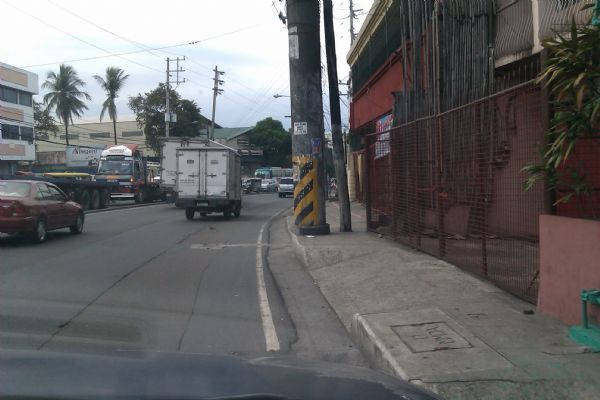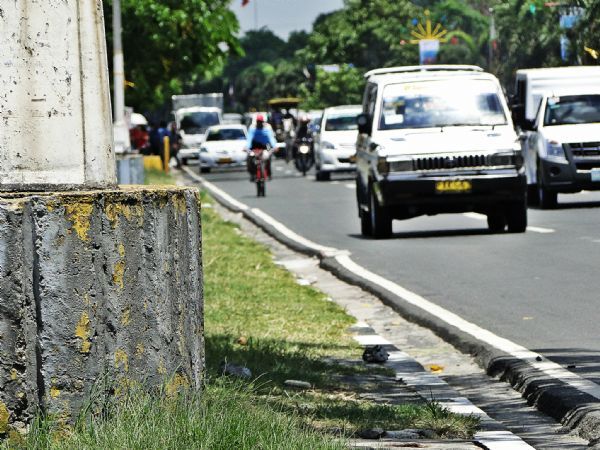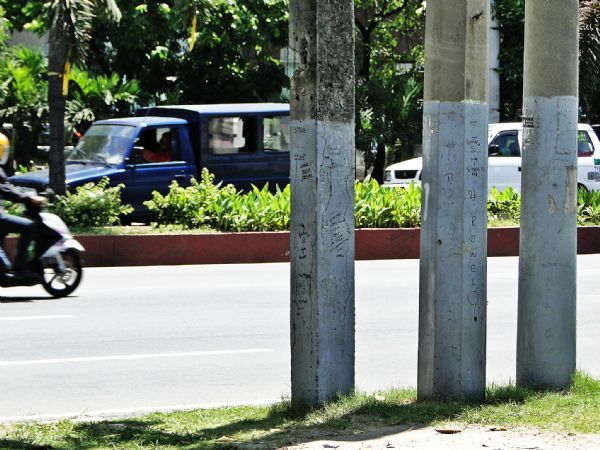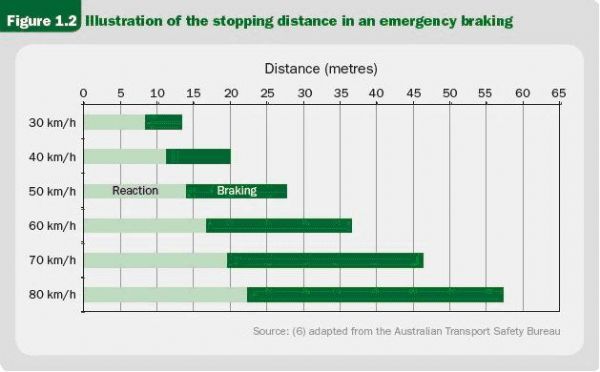





Sight Distance (Obstruction Removal)
Insufficient sight distance and limited forward visibility can adversely affect safety and increases the risk of a collision by reducing reaction times and stopping distances. Adequate sight distance provides drivers with sufficient time to identify and appropriately react to all elements of the road environment, including other road users and hazards. Sight distances are particularly important in areas where pedestrians and bicyclists are known to cross the road.
Where visibility is restricted, sight lines should be cleared through the removal of obstructions or through road realignment. For example, the removal of vegetation or the cutting of an embankment on the inside of horizontal curves will improve sight distances. Consideration must also be given to the location and height of fences and barriers to ensure they do not obstruct visibility.
Horizontal or vertical realignment of the road may be required at crest curves, dips or on the inside of horizontal curves if adequate sight distance cannot be provided through the relocation or removal of obstructions alone. See Realignment-Horizontal and Realignment-Vertical treatment pages for further information.
If sight distance cannot be significantly improved, speed management or restrictions to vehicle movements such as right turns and overtaking may be considered along with appropriate advance warning signs.
Sight distance is also needed in other situations where drivers need to interact with other users and where there is a change in road environment. These include the approach to tunnel portals, laybys, bus stops, merging and diverging areas. Ample sight distance is also needed on the approach to road signs so that these can be properly read by drivers.
The visual environment along a road should be planned with variety to reduce monotony. Opening up the view is desirable at scenic sections of the route and towards prominent landscape features or landmarks. This will also give a better sense of their location and progress of journey for users.
- Adequate sight distance provides time for drivers to identify hazards and take appropriate action to avoid them.
- Improved sight distances on the approaches to intersections and through curves can reduce crashes at these high-risk locations.
- Good forward visibility at pedestrian crossing facilities will give drivers more time to react.
- Rear end collisions can be reduced with improved forward visibility.
- Sight distance improvement can be associated with high cost if crest and/or curve realignments are required or if the line of sight is outside the road reserve requiring land acquisition to remove obstructions such as embankments, buildings etc.
- Although minimum sight distances must be provided, in some situations such as intersection approaches, excessive forward visibility may induce high approach speeds and take the attention of the driver away from the immediate junction conditions.
- Plantings and moundings are often required on the central island of roundabouts to restrict the forward visibility of approach drivers. Drivers seeing through the roundabout may overlook the presence of a roundabout and fail to slow down in time.
- In very specific cases, adjustments to reduce sight distances can be helpful in reducing approach speeds (see for example http://www.dft.gov.uk/ha/standards/dmrb/vol6/section2/td1607.pdf). However, particular care must be exercised when taking this approach.
- At intersections sight lines and visibility splays are often required at larger angles to the user’s normal view point (for example, in a motor vehicle the driver may have to look through the side windows).
- Ensure traffic signs and signal heads are not obstructed by vegetation or street furniture.
The Star Rating Demonstrator is a freely available tool with the iRAP online software, ViDA. With the Star Rating Demonstrator, it is possible to explore the impact that this Safer Roads Treatment has on risk.
Treatment Summary
Costs | Low to Medium |
Treatment life | 10 years - 20 years |
Potential casualty reduction | 25-40% |
Case Studies
Related Images
 Example for limited forward visibility and roadside hazard from Manila North Road, Philippines. Image credit: Greg Smith
Example for limited forward visibility and roadside hazard from Manila North Road, Philippines. Image credit: Greg Smith Roadside hazard in Manila, Philippines. Image credit: Greg Smith
Roadside hazard in Manila, Philippines. Image credit: Greg Smith Roadside hazards, Roxas Blvd Manila Philippines. Image credit: Greg Smith
Roadside hazards, Roxas Blvd Manila Philippines. Image credit: Greg Smith Stopping distances in an emergency. Image Credit: WHO
Stopping distances in an emergency. Image Credit: WHO










